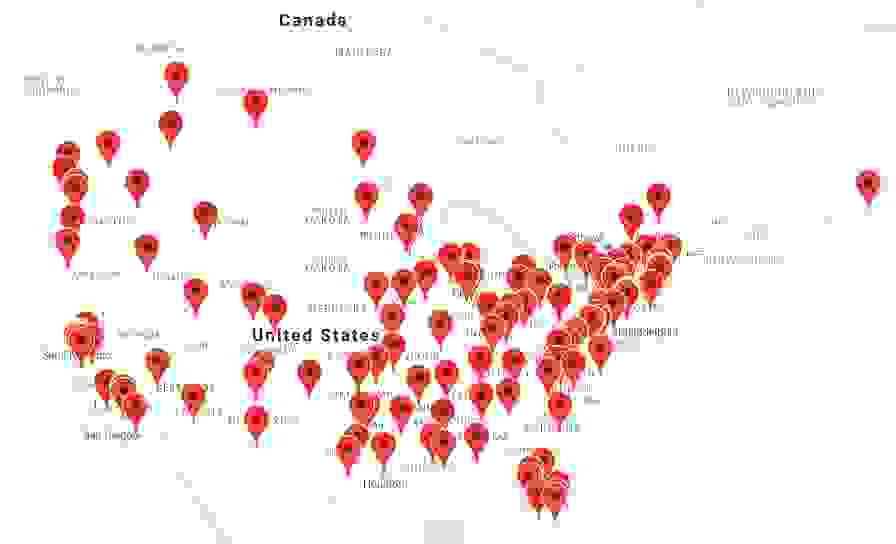Opera Conference 2020: Making Change
Adrian Ellis, director of AEA Consulting, offered a presentation about the disruptions affecting the arts sector and how organizations can begin to navigate an unpredictable future.
I would like to make three points about change management in the cultural sector as of late May 2020, when I am preparing these comments.
The first is that sudden, unpredictable change in our operating environment is unfortunately only illustrated by the pandemic and not confined to it. The second point is that the way that we plan and manage in the cultural sector in general is not very well designed for this tumultuous environment. The third is that opera as an art form is now created and performed within a massive range of organizational structures, so generalizations are risky. But we can and should identify some of the factors that might increase the prospects for effective institutional adaptation to this changing environment.
1. Complex non-incremental change is the new normal.
We have 40 million people unemployed, our cities are on fire, and more than 105,000 people died in the last two months from a pandemic we did not see coming. And of course, we went into the pandemic having slowly and imperfectly absorbed the scale and severity of the climate crisis, and — most of us — feeling frustrated by an unprecedented and growing level of political, social, and economic polarization.
We have technological innovations — from artificial intelligence to bioengineering — that are transforming the nature of work and its distribution and of the character of society itself. Our framework of international law and our international supply chains, on which our reliance is at a historic peak, are threatened by a resurgence of nationalism and the corrosion of international trade and defense agreements, from the European Union to the World Health Organization. We are in a period of nuclear proliferation.
All these dramas are interacting in ways that are simply too complex for man or machine to model. Nassim Taleb, who coined the term “black swans” to describe unforeseen events with significant impact, has stridently noted that the pandemic is not a black swan because so many people did indeed predict it. But our political and civic institutions were unable to muster an appropriate response. It is, rather, what has become known as a “wicked’ problem: that is to say, a problem that is fiendishly difficult to solve — not necessarily at a technical level, but within current political and social frameworks and values. Other wicked problems can easily be found in health care, hunger, income disparities within nations, obesity, terrorism, and — perhaps most urgently today — institutional racism. This is the next normal.
2. Our planning tools are not fit for purpose.
The way that we plan and manage in the cultural sector is in general not very well designed for this tumultuous environment. Opera is an art form that works on long planning horizons, although maybe not necessarily quite as long as planners would have us believe. But up to five years out if you are booking principal singers who are in demand. For opera as an art form and as a sector of the creative economy, this sudden foreshortening of horizons is uncomfortable to say the least.
To be clear, our current way of planning in the arts isn’t premised on a static environment. I would argue that arts managers are reasonably sensitized to the challenges of a changing operating environment and understand many of the longer term “drivers” — or at least these seven:
• Digital technologies’ changing impact on the creative process, on performance capture, and on distribution — and the challenges of developing viable business models around these.
• The long-term implications of demographic change for audiences and repertoire.
• Changes in people’s appetite for the experiential.
• The growing desire among younger audiences for co-creation and for greater agency in the creative process.
• The rise of venture philanthropy and the challenges that the arts have in holding their own in a philanthropic marketplace that puts a premium on problem solving.
• The profound impact of the decline in K-12 arts education on long-term arts participation.
• The changes in how leisure time is structured and planned and the challenges this represents for subscription models and for long-form works with set start times.
However, the next generation of challenges, for which the pandemic is perhaps only a harbinger, have a different character. They may be the result of longer-term secular trends such as those listed, but they usually manifest themselves in abrupt, non-incremental ways. We are increasingly facing events that are discrete, sudden, and over which we have limited agency:
• Climate change that leads to levee breaks in New Orleans, dam breaks in Michigan, or the flooding of the theater district in Houston. Long-term drivers but dramatic manifestations…
• The ubiquity of social media leads to digital swarming around a particular institution or its management or board.
• A pandemic that spreads quickly and unpredictably.
• A sudden reckoning of pent up historic social and racial injustices.
Responding to these requires an agility that is difficult to muster — fast, decisive action in real time, in the spotlight of media, and often of minute stakeholder attention. Traditional processes of strategic planning do not work well in this environment. They neither predict the event nor inform the response.
Plans are therefore generally set aside quite quickly because they are about institutional goals, and these goals tend to be very concrete. (Often quite literally so: building a new education center or theater.) They emphasize specific milestones, because these make for good fundraising collateral; they generate quantifiable KPIs (key performance indicators); and they provide a clear mechanism of accountability to stakeholders. The emphasis of “strategic planning” is on the planning rather than the strategic.
We need to remember that in periods of discontinuous change, it is mostly new organizations, unencumbered by the baggage of the past and engrained ways of doing things, that emerge victorious. Some companies evolve and emerge victorious, but many are wiped out. The dynamics are different in the for-profit and nonprofit sectors because there is no shareholder class in our world — no unified capital market pushing for efficiencies, mergers, and closures. Financially stressed arts organizations hang on for longer and they writhe more loudly and publicly.
The “disintermediation” — cutting out of the middleman — that has transformed taxi cabs, publishing, music, travel, and medical diagnosis is working its way toward us. And in these cases, it is usually new, unencumbered players that navigate a changed landscape most easily. Existing players have no alternative but to be on their mettle, unwelcome though the news is. The status quo is not an option.
3. One size does not fit all.
Opera as an art form is now created and performed within a formidable range of organizational structures — it’s quite a distance from the Met to the Really Spicy Opera or the Pacific Opera Project. But we can identify some of the factors that might increase the prospects for effective institutional adaptation to this changing environment. But I think the general shape of what is likely to work is clear:
Scenario planning is important because it forces you to set aside your biases and look honestly at alternative futures. It’s not about taking a bet on one of the scenarios, or planning around different financial scenarios; instead, it’s about creating different pictures of how the operating environment will play out, and then figuring out the impact on your institution and what you can do about it.
It’s important to manage the vulnerabilities of your company: the damage that can be done by external shocks. Your ability to withstand these shocks is manifest in one or two key metrics: the strength of the balance sheet and the ratio of fixed to variable costs. We should be working assiduously to address the ratio, remembering that in the very short run, all costs are fixed, while in the very long run, all costs are variable.
We should not over-learn the lessons of the last war. The very specific impact of the pandemic has taught us that earned income related to real estate is a liability. The next external shock will probably play out differently.
In advance of any form of planning, it is good to know and agree collectively what is in Column A (the essential defining assets) and what is in Column B (everything else). Make sure mission and values are in Column A and not Column B. Programs can and should be in column B. So should real estate.
Earlier this month, I asked some folks in the cultural sector whether they saw any opportunities amidst the current mayhem. Here they are in ascending order of ambition:
• Temper the idea of attendance as the principal metric of success. Using attendance figures clearly does not work in this context — we know as a key performance indicator, it can distort and trivialize an institution’s broader civic and cultural value. Let’s develop some we genuinely believe in.
• Take a more strategic approach to programming. In a period in which many funders are relaxing restrictive grant conditions and in which there is a new level of resource constraint, it’s never been more important to develop focused, well-defined program strategies with clear goals.
• Engage your neighborhood. Cultural institutions can be community anchors alongside educational and health institutions. Extend and deepen the local partnerships that are currently forming.
• Nurture the burgeoning virtual community. This is the moment when virtual audiences and their significance for the fulfillment of an organization’s mission can be more fully and permanently recognized, and institutional priorities realigned to reflect that reality.
• Hone the distinctive contribution of your art form to reimagining society. We are entering a period where a profound formulation of values and priorities is of existential importance — the word is overused, but, to be explicit, the existence of humanity will be determined by the values that inform personal behavior and social action. Artists and arts have to play a role in the framing and forming of that broader debate.
In this chaos, there is a mandate!
This article was published in the Summer 2020 issue of Opera America Magazine.





